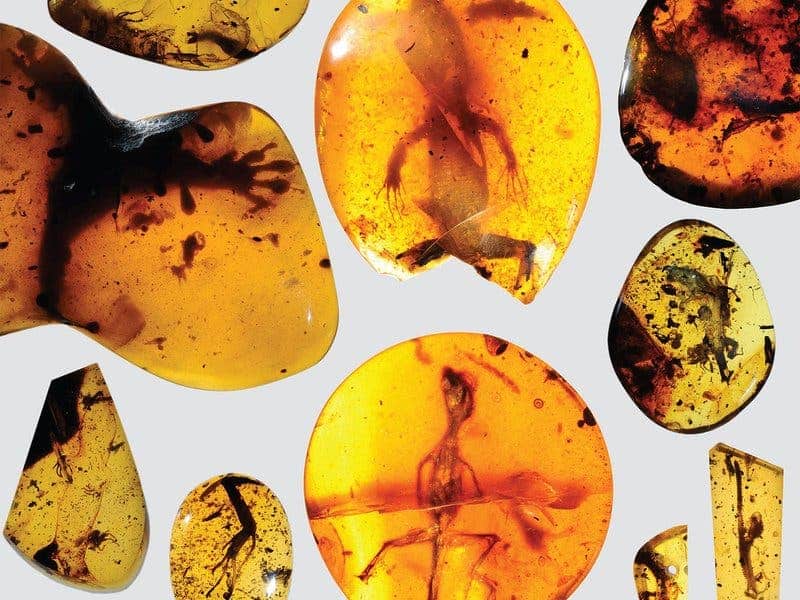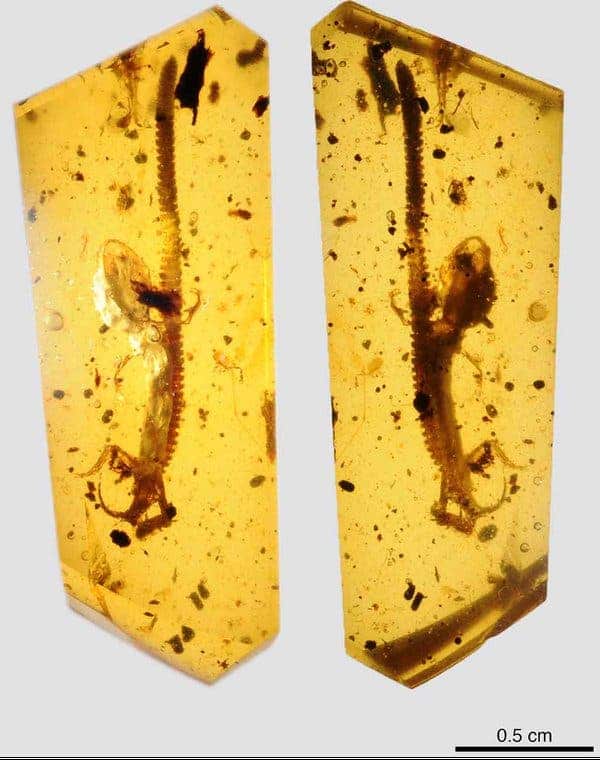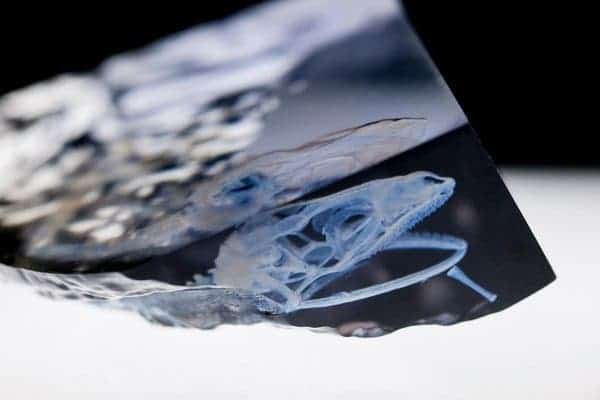The fossil record abounds with specimens of large animals, but seem to be discriminate against squishier, soft-bodied ones. That’s because fragile bones, let alone tissue, are more vulnerable to the elemental erosion, hence difficult to preserve. New specimens trapped in amber are always a treat for scientists. Usually, you can not only discern a complete skeleton, but also soft tissue like skin or even insect wings. Recently, a treasure trove of a dozen ancient lizards trapped in amber came to scientists’ attention. Everyone was impressed by the pristine preservation, but what particularly caught their eyes was a chameleon-like creature that’s 100 million years old. That’s 78 million years older than the previous record holder.

Initially discovered in a Burmese mine, the fossils remained in private collections until a recent donation to the American Museum of Natural History. Edward Stanley of the University of Florida and colleagues used a micro-CT scanner to image all the fossils trapped in the mid-Cretaceous amber. This allowed the researchers to build complete 3D models of each specimen without actually cutting open the amber.
“These fossils tell us a lot about the extraordinary, but previously unknown diversity of lizards in ancient tropical forests,” Stanley said.
“The fossil record is sparse because the delicate skin and fragile bones of small lizards do not usually preserve, especially in the tropics, which makes the new amber fossils an incredibly rare and unique window into a critical period of diversification.”
The preservation is mind-blowing. Complete specimens were found with all limbs intact, including claws, toepads, teeth, even perfectly intact coloured scales.
These small tropical lizards offer a glimpse into the mid-Cretaceous tropical life. The findings suggest that life in the tropical forest was just as diverse as it is today.

A dime-sized relative of the modern chameleon was among these animals. The juvenile had ballistic tongues, suggested by the presence of the same bone found in modern chameleons, but had not yet developed the claw-like fused toes used today to cling to branches. Interestingly, one of the geckos trapped in the amber already evolved its famous sticky pads which can adhere to virtually any surface.

It is thought, based on genetic screenings, that chameleons split from an ancestor called agamidae sometime around the mid-Cretaceous, but fossils were lacking to support this hypothesis. Stanley says that the newly found chameleon-like lizard challenges the notion that these animals originated from Africa.
According to the SSC Chameleon Specialist Group (CSG), a third of the world’s chameleon species are threatened with extinction.
“These exquisitely preserved examples of past diversity show us why we should be protecting these areas where their modern relatives live today,” Stanley said.
“The tropics often act as a stable refuge where biodiversity tends to accumulate, while other places are more variable in terms of climate and species. However, the tropics are not impervious to human efforts to destroy them.”
Findings appeared in Science Advances.


